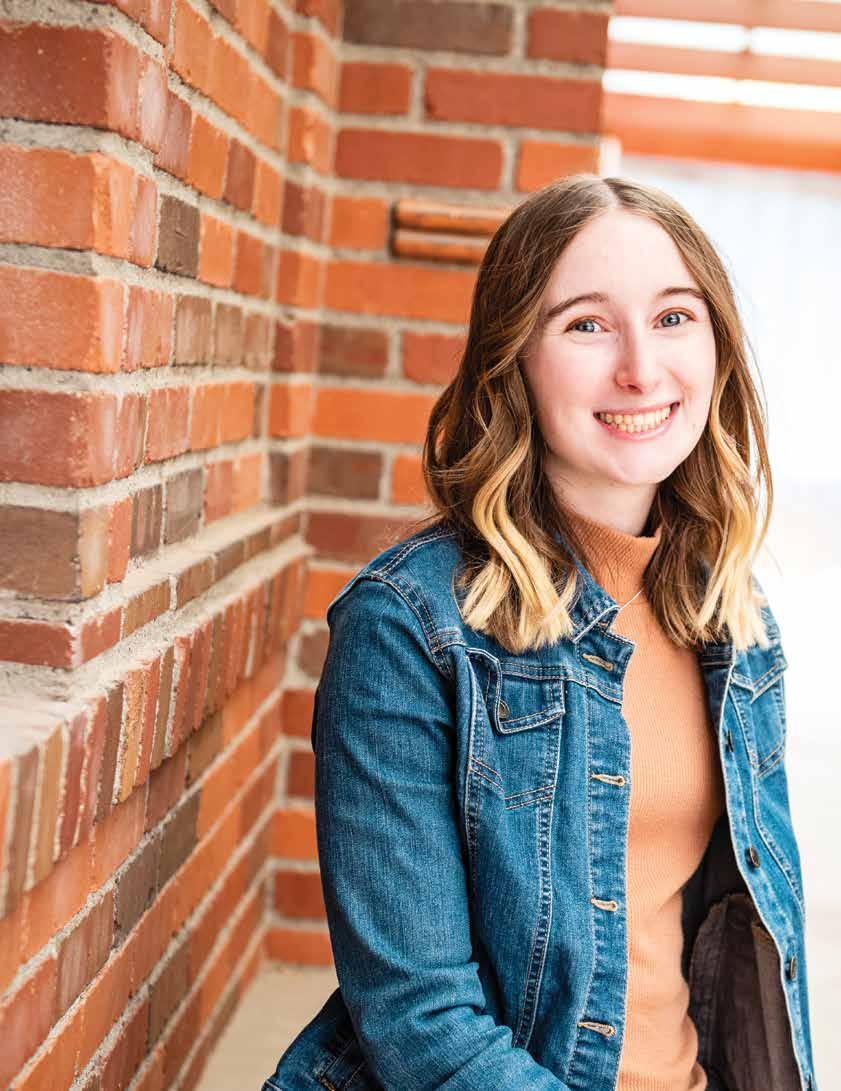
The Dangers of Alcopops ALSO » Perspectives Matter » The Importance of Family Connection » Medicine Cabinet: Friend or Foe? USING FEEDBACK EFFECTIVELY IN PARENTING Issue #6 | www.thegcpc.org BROUGHT TO YOU BY




D4 D5 D6 D7 E4 E5 E6 E7 A MESSAGE FROM THE U.S. SURGEON GENERAL The human brain is the last organ to fully develop, at around age 25. Nicotine in e-cigarettes can harm brain development and lead to addiction in youth and young adults. Let's protect our kids. Learn how at e-cigarettes.surgeongeneral.gov Print Only Document


thegcpc.org | YC MAGAZINE | Issue #6 1 INSIDE 2 From the Director 5 Confessions from the Kitchen Table 10 Faces in the Crowd 11 40 Developmental Assets 12 Assets in Action 18 Q&A / By the Numbers 6 Using Feedback Effectively in Parenting 14 Perspectives Matter 16 The Importance of Family Connection 20 Medicine Cabinet: Friend or Foe 23 The Dangers of Alcopops FEATURES IN EVERY ISSUE TO ADVERTISE OR CONTRIBUTE Andrea Keller: (810) 285-9047 akeller@thegcpc.org COVER PHOTO BY Wandering Albatross Photography BROUGHT TO YOU BY PRODUCED IN CONJUNCTION WITH ISSUE #6
COALITION
The Genesee County Prevention Coalition (GCPC) was established in 2007 and serves all of Genesee County, Michigan. The goals of the coalition are to maintain and strengthen community collaboration in support of local efforts to prevent youth substance use and promote positive community norms. The GCPC utilizes the Strategic Prevention Framework to build capacity and collaboration with all sectors of the community. This is accomplished through recruiting, engaging, and training community members, especially youth, in the work of the coalition. These and other community-based and environmental prevention strategies are supported by local, state and federal grants as well as donations and in-kind support from our community partners.
MISSION
To improve behavioral health through innovative strategies and community partnerships to prevent substance use and mental health disorders impacting Genesee County youth and adults.
VISION
Genesee County Prevention Coalition envisions a community free of mental health and substance use disorders.
Director FROM THE
It’s hard to believe we are already into a new school year. The sights and sounds of Fall are all around us. Whether it is enjoying the cooler days, the changing colors of the trees or the roar of your favorite football team we hope you can embrace this time with your family. As schedules get hectic this time of year, we are reminded of the importance of taking time to come together and nurture family bonds. In this issue we focus on family attachment and what parents can do to create opportunities for connection. We know that having meals together is a protective factor, but we also know that bringing everyone together around the dinner table at the same time can be a challenge. If that is the case then consider a different time like breakfast, a healthy snack time after school or before bed. It just needs to be an uninterrupted time without screens where everyone has time to share and be heard.
To build on these communication strategies Dr. Lantz in the article Using Feedback Effectively in Parenting provides some great advice on how to use feedback when guiding your child in developing healthy habits. Behavior problems are not character flaws, and one approach parents can use is referring to the behavior as a habit, which can be good or bad and provide feedback on making positive behavior changes. Another important aspect of healthy social and emotional development is understanding the impact of Adverse Childhood Experiences (ACEs). In the article on Perspective Matters parents are encouraged to see things from their child’s perspective and consider their own ACEs and how that has shaped them in adulthood.
The GCPC along with community partners have been working to bring an awareness of trauma-informed approaches to address the social and emotional needs of youth and adults in our community. Building the capacity of service providers to utilize these evidence-based practices is essential to the healing process and moving from surviving to thriving! We hope the information included in this magazine is helpful in building positive connections within your family.

2 Issue #6 | YC MAGAZINE | thegcpc.org
ABOUT THE GENESEE COUNTY PREVENTION
CORE VALUES As a trusted steward of the community, Genesee County Prevention Coalition champions: + Optimal Health + Community Safety + Data-Informed Innovation + Self Empowerment + Inclusive Partnerships FOLLOW US ONLINE! WEBSITE thegcpc.org FACEBOOK facebook.com/theGCPC INSTAGRAM instagram.com/theGCPC TWITTER twitter.com/the_GCPC LINKEDIN linkedin.com/company/genesee-county-prevention-coalition/ LISA FOCKLER, E XECUTIVE DIRECTOR Genesee County Prevention Coalition lfockler@thegcpc.org (810) 285-9047




thegcpc.org | YC MAGAZINE | Issue #6 3 Once fully enrolled, you'll receive a $50 thank you check in the mail w w w . f l i n t r e g i s t r y . o r g ( 8 3 3 ) G O F L I N T f l i n t r e g i s t r y @ h c . m s u . e d u E V E R Y E V E R Y I S I M P O R T A N T P E R S O N S T O R Y People impacted by the Flint water crisis can participate in this voluntary, secure registry that connects them to programs and other resources aimed at minimizing the effects of lead on their health while promoting wellness and recovery @flintregistry H E R E F O R F A M I L I E S . H E R E F O R Y O U . H E R E F O R F L I N T . The Flint Registry is a public health project for people impacted by the Flint water crisis E N R O L L T O D A Y & L E A R N M O R E : W W W . F L I N T R E G I S T R Y . O R G
VOICES FOR CHILDREN WELCOMES GENESEE COUNTY'S





a m i l y R e s o u r c e C e n t e r
ABOUT THE CENTER
The Family Resource Center at Voices for Children is a resource and support hub for children, families, individuals and organizations in Genesee County. It is our mission to connect, coordinate, collaborate and induce resilience through education, parent leadership, resource sharing, engagement and relationship building. Funded by Children's Trust Michigan
F
810 238 3333 ext. 209 tenesa@voicesforcac.org www.voicesforcac.org
CONFESSIONS FROM THE KITCHEN TABLE
MAKE FAMILY TIME MEANINGFUL WITH GAMES
Playing games as a family has many benefits. Sitting down together for a game is a great way to connect and spend time together as a family. The strategy and skill needed for games help bolster brainpower. Games are an easy and fun way to replace screen time. Practicing social skills like taking turns, being a gracious winner or loser, or working as a team are other reasons to break out the board games. There are many reasons why playing games as a family are a good idea. Below are some suggestions to make Family Game Night even more meaningful and fun.
GO OLD SCHOOL
When it comes to games, it may be time to revisit the classics. Have your kids ever played Monopoly, Parchisi, or backgammon? If you don’t have these oldies-but-goodies hiding in a closet somewhere at home, borrow a set from a friend or relative or hit up the local thrift store.
NEW KIDS ON THE BLOCK
As much fun as the old classics are, there are many exciting new games to be found. Newer games often have a silly or creative twist that add to the fun. Sushi Go and KingDomino are two newer games for everyone 8+ (but might be enjoyed by kids as young as 6 with support) that encourage strategy and critical thinking and will covertly have your kids adding, subtracting and even multiplying. Exploding Kittens and King of Tokyo are two newer games that have become fan favorites and are sure to be enjoyed by all.
TEAMWORK MAKES THE DREAM WORK
Cooperative games have also become a popular option for families. Families with younger children will enjoy the games released by Peaceable Kingdom such as Race to the Treasure or Mermaid Island. Older kids will enjoy games like Spaceteam or Ravine where players must work together to “survive.” Puzzles, while not technically games, are also a great way to encourage family cooperation. These all downplay competitiveness and promote working as a team to achieve a common goal.
GIVE LEARNING A BOOST
Take the opportunity games provide to aid in learning. For preschool and early elementary students, almost any card or dice game is a great way to practice number sense and counting. For kids in elementary and middle school, games can help make even the most difficult subject fun! Invent your own game or modify a classic like Go Fish or War to reinforce what your student is studying in school. You can also find educational games readymade at education stores like LakeshoreLearning.com. You will discover a wide variety of games that reinforce math, geography, and word skills. Some of my favorites include Splat!, SMATH, and GeoCards.
GROWTH THROUGH GAMES
In addition to incorporating academic learning into family games, it can be meaningful to incorporate emotional learning into games. Games can provide structure and a safe way for families to discuss feelings.
A simple preschool memory game can help kids and adults of any age connect with their family. Play as you would play a normal game of memory. When you find a match, share a family memory that corresponds with the picture on the card. For example, “I found the match with the teapot. I remember when we used to play tea with that little toy tea set that Grandma gave me.” Or “I matched the pictures of the tree. There was that summer when I fell out of the neighbor’s tree and you brought me a popsicle.”
Another idea is to grab a deck of Uno Cards. Assign each color a feeling. Blue could equal sad, red could represent mad, and so on. Each time a family member lays down a card that is a different color than the one previous, that player must share a time they felt sad, mad, etc.
Another game your family can use to discuss feelings is Jenga. Before assembling your Jenga tower, write a question on several blocks. When a block is removed, the player must answer the question on that block. Questions might include things like, “Share a time when you were disappointed” or “When were you the happiest?”
Games can provide your family with hours of meaningful entertainment, learning, and camaraderie. What game will you be rolling out next? ■
For many of us the kitchen table represents the typical family experience. We have laughed while having family game night. We have cried over our children’s choices. We have blown out the candles on many cakes. We have argued our way out of doing the dishes. We have struggled through those “three more bites.” We have learned hard lessons and celebrated many deserved successes. One thing is for sure though—if our kitchen tables could talk, there would be plenty of stories! So often it is in relating to others’ stories that we realize there isn’t always one answer, or even a right answer. Parenting is hard work! If you have a story of lessons learned, we invite you to share it with our readers. Sometimes, knowing we aren’t the only ones struggling to find the answer is all the help we need.
thegcpc.org | YC MAGAZINE | Issue #6 5
YOU CAN SUBMIT YOUR STORY AT: akeller@thegcpc.org
FEEDBACK
Effectively in Parenting USING

FEEDBACK Parenting
By LEN LANTZ, MD
THE POWER OF DESCRIBING THE BEHAVIOR YOU WANT TO SEE
Feedback is less effective when spontaneously interjected into routine communication. It’s best that you give kids a heads up that you want to see a pattern changed. Make sure they do not have an audience. Take steps to ensure that you have their full attention. Rather than dwelling on the negative side of their behavior, clearly describe the behavior or outcome you want to see. Here are some examples:
• If your child is refusing to stop playing videogames in the evening, you could say, “Sean, when I walk into this room in the evening and say that it’s time to save your game and turn it off, I want to hear you say, ‘Okay, Dad’ and then get the task done in under 60 seconds. I’ll be here with you while you get it done.”

• If your child is not starting their homework after school, you could say, “Katie, when you get home from school, I will set a timer for 20 minutes so that you can relax for a little bit. When the timer goes off, I will let you know it is time to start your homework. I want you to say, ‘Okay, Mom,’ hand me your phone and get started on your homework. I’ll hang onto your phone for you so that it’s not a distraction. I’ll hand back your phone –with a smile – when you show me that your homework is done for the day.”
• If your child is not taking care of their hygiene, you could say, “Cory, we had a talk about this the other day, and it was pretty clear that the best time for you to take a shower each day is in the evening around 8 p.m. That hasn’t been happening. I’m going to check on you each evening around 8 p.m. to make sure that you are getting it done until it becomes your new routine. If it’s 8 p.m. and I find that you are not in the shower, I will remind you – in a friendly way – to take your shower. What I want to hear from you at that moment is, ‘Okay, Dad,’ then pause or wrap up your activity in less than one minute and head to the shower.”
HELP KIDS SEE THEIR PROBLEMATIC BEHAVIORS AS CHANGEABLE AND NOT CHARACTER FLAWS
If kids are struggling to change their behavior, one approach parents can use when providing feedback is to refer to the behavior as a habit.
Habits can be good or bad, but most people recognize that they are changeable rather than ingrained character flaws. Bad habits like chewing on fingernails sound like something that can be fixed rather than a personal failure. What you name you reinforce. Never use negative labeling. Avoid, “You always” statements, as most people react poorly to
thegcpc.org | YC MAGAZINE | Issue #6 7 continued on page 9
Be a voice for children


Court Appointed Special Advocates (CASAs) are volunteers specially trained to work on behalf of children in foster care to ensure the children receive the care and services they need. CASAs look out for the child’s best interest, from the time they enter foster care, until they are reunited with their family or adopted.
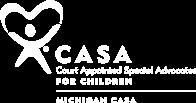
You can make a difference in the lives of children. Learn more or reach out by visiting our website today, or use the QR code below.

voicesforcac.org | (810) 238 - 3333 ext. 211 Become a CASA volunteer today and make a difference
continued from page 7
all-or-none statements because they are untrue and easily disproven. Here are some common examples:
Picking on siblings:
It’s not helpful to label the behavior as “bullying.” It’s more effective to label the behavior as a habit of boredom. For example, you could say, “Kevin, I have noticed you have a habit of getting bored, and then you end up pushing your little brother’s buttons for entertainment. I know that you can change that. Let’s sit down together and come up with a list of 20 things that you can do immediately when you are feeling bored rather than using your little brother for entertainment. When I notice that you are pushing his buttons, I’ll point out to you that I think you are bored, which will be our secret code that I want you to do an activity from the list.”
Skipping chores:
It’s best to avoid a negative label such as “lazy” and instead to label the problem behavior as a habit of procrastination. “Tara, I’ve noticed that you have not been getting your chores done, and then when I point that out to you, you get upset. I’m concerned that you have developed a habit of procrastination, and I know that you can change that. Your chore is to vacuum the carpets on the weekend. There is no set time for you to get it done, but you don’t like it when I point out on a Sunday evening that your chore is still not done. It usually only takes you about 15 to 30 minutes to get the job done. If you have busy plans for the weekend, you can develop the habit of
being proactive and vacuuming on a Friday afternoon. If I see that you haven’t done it by 11 am on a Sunday, I’ll point it out to you. At that point, I want you to say, ‘Okay, Mom,’ pause whatever activity you are doing and get the vacuuming done before lunch.”
Avoiding certain homework:
It is helpful to avoid language that suggests a child is bad at a certain subject in school. Saying that they do not have a “gift” for a particular subject and that you see they have the habit of avoiding the subject can be more helpful. For example, you could say, “Joe, I noticed that you have not been getting your math homework done, and I’m concerned you have developed a habit of avoiding it. I’m not okay with that, and I know that you can change that habit. I’m well aware that you do not enjoy or feel that you have a gift for math. That does not mean you can’t learn the material and understand the concepts. I’ll help you, so before you finish working on your homework each day, come find me so we can look at your math homework together. I’m sure it can get better. You can develop the habit of proactively tackling difficult subjects!”
GIVING EFFECTIVE COMPLIMENTS
Have you ever complimented a child and had it blow up in your face? There may be reasons for this. The most common pitfall is adding a criticism to the compliment. If you say, “Good job!” make sure not to follow it up with, “Why can’t you do this all the time?” Imagine if someone who thought you smelled nice said to you, “Wow! You don’t smell bad…today.” Would that feel like a
compliment? The problem for many parents is that when they feel like their child did something right for once, they are so relieved that they let their guard down, and instead of simply complimenting their child, they deliver a back-handed compliment that turns a positive intention into something negative. I’ve heard kids refer to this kind of compliment as a “take-back” compliment because the compliment got mixed up with a criticism. The take-back compliment is usually worse than saying nothing at all.
• The best compliments are descriptive and simple: “Great job hustling on the field and defending the goal.”
• Compliments can be enhanced by asking kids if they are proud of themselves or feel good about themselves: “I’m impressed by all the hard work you put in over the years. Are you proud of yourself for getting your diploma?”
• Compliments can help kids take ownership of their positive outcomes. If a child deflects the compliment or attributes their success to someone else, you could say, “Yes, but you did it!”
• Compliments can be especially powerful when a child overhears their parent speaking positively about them to another adult (as long as the parent does not sound like they are taking credit for the achievement).
• Compliments are more effective if the parent is not simultaneously trying to provide feedback or engage in routine communication. ■

thegcpc.org | YC MAGAZINE | Issue #6 9
Anthony Nicholas PROJECT COORDINATOR, GCPC

Anthony received his Master’s in Public Health from Purdue University and Bachelor’s in Exercise Science from Wayne State University. He has acquired over ten years of health promotion experience, primarily in the field of health and wellness, as well as clinical applications. Anthony is passionate about influencing change and providing resources and opportunities to those who are in need to help influence a healthier tomorrow. “I am excited for expanding my experience and credentials into the substance abuse realm, as well as continuing my insatiable desire to learn as much as I can about Public Health. I absolutely love what I do for my community and look forward to the upcoming challenges that await.”
Erin Gagnon PREVENTION SPECIALIST, GCPC


Erin is currently pursuing her MPH degree at Oakland University, after having received her Bachelor’s in Integrative Studies from there in 2019. She has over twenty years of experience in health and wellness, including experience working on program planning, implementation, and evaluation through research at Oakland University, and facilitating the 2021 Community Readiness Survey on underage drinking for GCPC. “I am excited to be working with GCPC and its community partners as a Prevention Specialist, learning more about substance abuse and mental health issues, and collaborative approaches to build community capacity and find sustainable, long-term solutions. I am passionate about helping and empowering others, especially youth and look forward to serving the Genesee community.”
Nadli Arabo PREVENTION SPECIALIST, GCPC
Nadli received her Bachelor’s in Health Science from Oakland University in 2018. She will be graduating from Oakland University in the winter of 2023 with a Master’s in Public Health. After an internship with GCPC on Opioid Awareness in Genesee County, she was hired as a Prevention Specialist. Nadli is currently a certified Pharmacy Technician working with Henry Ford Health. “My areas of interest are in the areas of opioid overdose as well as epidemiology. With the GCPC, I can reach people affected by opioid overdose and advocate for awareness and change. I am eager to expand my knowledge in the field of Public Health and look forward to my career in this field.”

Tiffany Rouser PROGRAM DIRECTOR, THE ENGAGEMENT CENTER

Tiffany Rouser is a Flint native who is passionate about community engagement and advancing awareness of local resources that often go underutilized. She also values contributing to local organizations that positively impact the community. Tiffany is the Program Director of The Engagement Center, an organization located in Flint, MI that serves Genesee County’s Opportunity Youth, 16-24 year-olds who are not enrolled in school or are unemployed. With an estimated 15,000+ Opportunity Youth population in Genesee County, The Engagement Center’s mission is to connect Opportunity Youth to education, employment, and wraparound services to help them achieve independence and financial success.
Hannah Theodorovich MENTOR COORDINATOR, PECKHAM, INC.
Hannah is the Mentor Coordinator at Peckham, Inc. She has a Bachelor’s of Science in Public Health from Wayne State University and is currently a Master of Public Health Candidate at the University of Michigan – Flint. Hannah has been working at Peckham for three years and is passionate about helping youth in the community. In her role, she helps match at-risk teens with mentors from the community and educates youth about STEM careers. Her favorite part of her job is helping youth achieve their goals and spending time doing science projects with her students. In her free time, Hannah enjoys playing volleyball, reading, and coaching volleyball at a local high school.
10 Issue #6 | YC MAGAZINE | thegcpc.org
IS THERE SOMEONE YOU’D LIKE TO NOMINATE?
Check out who’s standing out in our community.
Please email akeller@thegcpc.org and tell us why this individual has stood out in your crowd.
DEVELOPMENTAL ASSETS


empower and protect our children, building the 40 Assets in our youth is a great way to start. Look over the list of Assets on the following page and think about what Assets may be lacking in our community and what Assets you can help build in our young people. Do what you can do with the knowledge that even through helping build one asset in one child, you are increasing the chances that child will grow up safe and successful. Through our combined efforts, we will continue to be a place where Great Kids Make Great Communities.

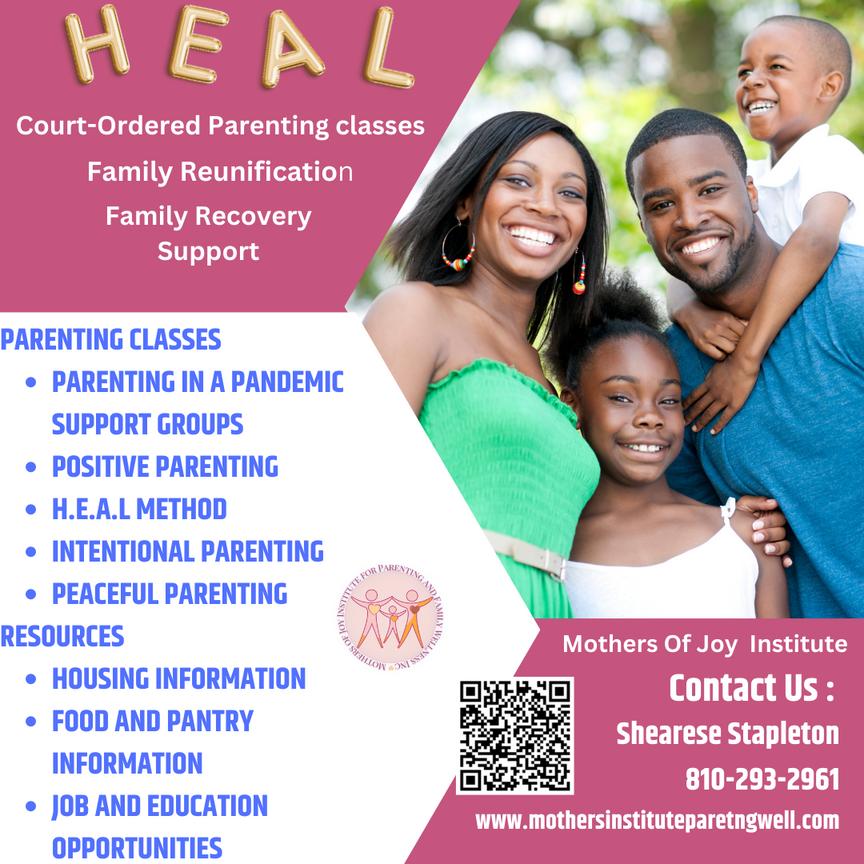
thegcpc.org | YC MAGAZINE | Issue #6 11
40
Turn the page to learn more! The 40 Developmental Assets® may be reproduced for educational, noncommercial uses only. Copyright © 1997 Search Institute®, 615 First Avenue NE, Suite 125, Minneapolis, MN 55413; 800-888-7828; www.search-institute.org. All rights reserved. OPEN GYM with youth programs ADULT COMPUTER LAB with smart device assistance, Tuesday 1 2pm THERAPIST on Site every Wednesday. No insurance no problem! Call 810 777 5197 to schedule an appointment DRIVE THRU FOOD GIVEAWAY every other Wednesday AFTER SCHOOL PROGRAM offering help with homework, computer lab, math center, science/health center and literacy program! Thursday 4 7 pm F R E E M E A L S S E R V E D Our mission is to serve the community's needs and to improve the community’s knowledge and awareness of available resources and support services, emphasizing suicide prevention and providing programs that are adaptive for multi generational families 6 1 5 W M c C l e l l a n S t r e e t , F l i n t , M I 4 8 5 0 5 E m a i l : s m c o c f l i n t @ g m a i l c o m P h o n e : 8 1 0 7 7 7 5 1 9 7 w w w . s m c o c f l i n t . o r g Mothers of Joy Institute for Parenting and Family Wellness, Inc Contact Us: Shearese Stapleton 810 293 2961 www.MotherInstituteParentingWell.com scan for class registration
assets in action
SUPPORT
1. Family support: Family life provides high levels of love and support.
2. Positive family communication: Young person and her or his parent(s) communicate positively, and young person is willing to seek advice and counsel from parent(s).

3. Other adult relationships: Young person receives support from three or more nonparent adults.
4. Caring neighborhood: Young person experiences caring neighbors.
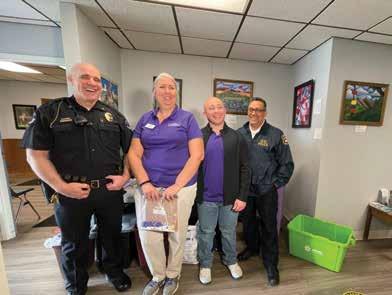

5. Caring school climate: School provides a caring, encouraging environment.
6. Parent involvement in school: Parent(s) are actively involved in helping young person succeed in school.
EMPOWERMENT
7. Community values youth: Young person perceives that adults in the community value youth.
8. Youth as resources: Young people are given useful roles in the community.
9. Service to others: Young person serves in the community one hour or more per week.
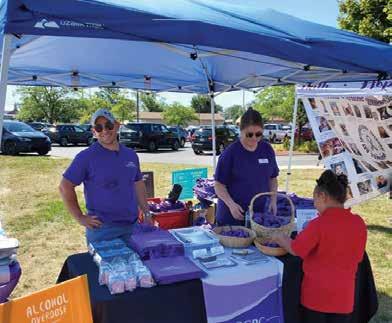
10. Safety: Young person feels safe at home, at school, and in the neighborhood.
BOUNDARIES & EXPECTATIONS
11. Family boundaries: Family has clear rules and consequences and monitors the young person’s whereabouts.
12. School boundaries: School provides clear rules and consequences.
13. Neighborhood boundaries: Neighbors take responsibility for monitoring young people’s behavior.
14. Adult role models: Parent(s) and other adults model positive, responsible behavior.
15. Positive peer influence: Young person’s best friends model responsible behavior.
16. High expectations: Both parent(s) and teachers encourage the young person to do well.
CONSTRUCTIVE USE OF TIME
17. Creative activities: Young person spends three or more hours per week in lessons or practice in music, theater, or other arts.
18. Youth programs: Young person spends three or more hours per week in sports, clubs, or organizations at school and/or in the community.
19. Religious community: Young person spends one or more hours per week in activities in a religious institution.
20. Time at home: Young person is out with friends “with nothing special to do” two or fewer nights per week.
12 Issue #6 | YC MAGAZINE | thegcpc.org
75
3
International Overdose Awareness Day: United Community Addiction Network (UCAN) event
Prescription Drug Take Back Day at City of Clio Police Department
10
NDAFW quiz contest winner, Tina Hill, LCSW Clinician MCC and Lisa Fockler, GCPC
40 DEVELOPMENTAL ASSETS International Overdose Awareness Day: Mott Foundation participates in “Light the City Purple”
COMMITMENT TO LEARNING
21. Achievement motivation: Young person is motivated to do well in school.
22. School engagement: Young person is actively engaged in learning.
23. Homework: Young person reports doing at least one hour of homework every school day.
24. Bonding to school: Young person cares about her or his school.

25. Reading for pleasure: Young person reads for pleasure three or more hours per week.
POSITIVE VALUES
26. Caring: Young person places high value on helping other people.
27. Equality and social justice: Young person places high value on promoting equality and reducing hunger and poverty.
28. Integrity: Young person acts on convictions and stands up for her or his beliefs.
29. Honesty: Young person “tells the truth even when it is not easy.”
30. Responsibility: Young person accepts and takes personal responsibility.
31. Restraint: Young person believes it is important not to be sexually active or to use alcohol or other drugs.
SOCIAL COMPETENCIES
32. Planning and decision making: Young person knows how to plan ahead and make choices.
33. Interpersonal competence: Young person has empathy, sensitivity, and friendship skills.
34. Cultural competence: Young person has knowledge of and comfort with people of different cultural/racial/ethnic backgrounds.
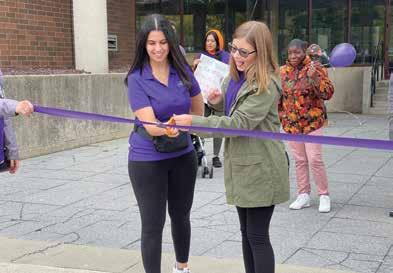

35. Resistance skills: Young person can resist negative peer pressure and dangerous situations.
36. Peaceful conflict resolution: Young person seeks to resolve conflict nonviolently.

POSITIVE IDENTITY
37. Personal power: Young person feels he or she has control over “things that happen to me.”
38. Self-esteem: Young person reports having a high self-esteem.
39. Sense of purpose: Young person reports that “my life has a purpose.”
40. Positive view of personal future: Young person is optimistic about her or his personal future.
thegcpc.org | YC MAGAZINE | Issue #6 13 35 26 2238
Voices for Children Advocacy Center’s Superhero Run
Serenity House Communities 8th Annual Recovery Walk & Rally
National Night Out at Grand Blanc Township Police Department
Juneteenth Black Wall Street at Flint City Hall
If you or your child would like to submit a picture that represents one of the 40 Developmental Assets, please email akeller@thegcpc.org with a picture and the number of the asset the picture represents.
Not all pictures are guaranteed publication.
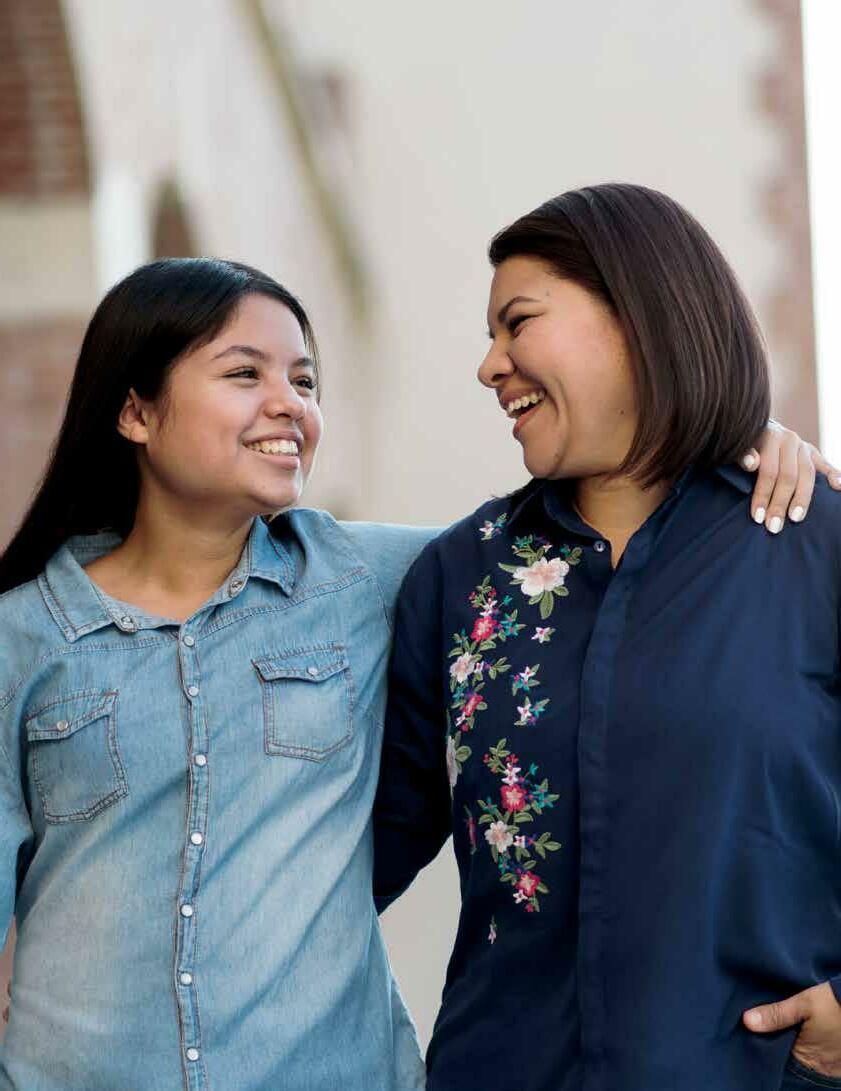
perspectives MATTER
Craig Struble, LCSW, LAC
H
ow many times have you used the phrase, “Oh, that was just a misunderstanding.” How many times have you used the phrase, “Oh, that is just a different perspective.” My guess is we use the first far more than we do the latter. In today’s society, it seems like we spend more time trying to get people to understand us rather than us understanding them. In all of our interactions with each other, it is important for us to understand perspective.
Hopefully, by now, you have heard about ACEs. ACEs are Adverse Childhood Experiences, which can have an impact on our future. ACEs can be things like physical abuse and neglect, violence in the home, or even just having divorced parents. The number of ACEs does not define us but gives us an entry point into our history. Looking at ACEs makes us look at perspective. Often times we look at those who are struggling and ask, “What is wrong with them?” as opposed to the question that ACEs trainings say to ask which is, “What has happened to them?” The difference in how that question is asked changes the perspective we would have of that person. The next time you see someone on the street corner with a sign asking for help, I challenge you to ask yourself the question, “I wonder what has happened to them?” and see how your perspective of them changes. To take it a step further, what if we started that conversation with our kids to help them start changing their perspectives?
Another way for us to gain an understanding of perspective is by being an active listener. A previous employer used to tell me 70 percent of communication is listening. I never really understood what they meant by that until I started to understand active listening. I think the best definition I have seen lately to describe active listening comes from a social media post. It said, “Listen to understand instead of listening to
Looking at ACEs makes us look at perspective. Oftentimes we look at those who are struggling and ask, “What is wrong with them?” as opposed to the question that ACEs trainings say to ask which is, “What has happened to them?” The difference in how that question is asked changes the perspective we would have of that person.
parenting? I do not know about you, but when I became a parent, I was not given a play book for how to do everything right. One thing I noticed in raising my four children was that there was less conflict when I tried to understand their perspective rather than trying to get them to submit to mine. Each of our children is different and, while hopefully they have similar experiences being in the same home, they also will have their own experiences. It is these experiences that shape their perspective.
respond.” Think about that statement. How often do we formulate what we are going to say back to a person before they are finished speaking? This is especially true when “listening” to our kids. When we listen to respond, we could miss out on information that is needed to help us to understand the other person’s perspective. This is commonly found in situations where we have become defensive and when emotions are high. This is why it is often best to step away from a situation with high emotions before having a conversation so that we can actively listen and come to a resolution.
So what does all this have to do with
One example of this comes from a family I worked with when counseling them. The family unit consisted of a married mom and dad, two older brothers, and a younger sister. In a family session one day, we were discussing how they talk to each other. The younger sister stated that she gets upset when dad yells at them. The brothers defended dad saying that he doesn’t yell. Mom, trying to be the mediator, stated that she doesn’t think dad yells but that his voice gets more stern. Amongst these four people in the family there were three different perspectives as to whether or not dad was yelling. While I never witnessed dad yelling, it was evident that the daughter really believed that he was yelling. In order for the family to make progress in this area, everyone needed to understand each other’s perspective and accept that a perspective is not right or wrong. Perspective is about how we see what is happening.
Our perspective of our reality is just that – ours. It is true for us, but that doesn’t make it true for others. Kids today are experiencing things much differently than we did, just like we experienced things differently than our parents. We have all heard the cliché “walk a mile in my shoes.” Well, maybe we do not need to walk a mile, but asking the question, “What has happened to them?” will help us gain insight into their perspective, which in turn will decrease conflict and strengthen that relationship and communication.
thegcpc.org | YC MAGAZINE | Issue #6 15
■
the importance of FAMILY CONNECTION
By CRAIG STRUBLE, LCSW, LAC
This article is a continuation of our series addressing risk and protective factors. Risk factors increase the likelihood of youth getting involved in risky behaviors, like drug or alcohol use. Protective factors wrap a youth in protection and lessen their chances of getting involved in risky activities.
here are not enough hours in the day” is a phrase I hear often. Life seems to be busier these days than in the days of June Clever or Mrs. Cunningham. Often both parents are out of the home working. We have our kids in activities, which seems to have us going all the time, as well. And then we have the social media craze, which can often get in the way of spending good, quality time together, for kids and for adults. One of the biggest struggles I see when working with children and families is the distance that is created just because of life.
Attachment has become a key word in the world of mental health and, while it is the basis for how we, as infants, learn to interact with others, it is not something that is sustained without continued nurturing of the attachment. As parents, it is important that we continue to make it a point to be part of our children’s lives. Studies have shown that parental involvement can do things like increase self-esteem and increase academic achievement. Some studies have also suggested as much as a 40% lower chance of developing depression in early adulthood in children with a higher parental involvement.
Now this does not mean that I am suggesting that we need to be helicopter parents, hovering over everything our kids do and not giving them the ability to work through some struggles on their own. What it does mean is we must make a cognizant effort to engage with our children. So what are ways that we can do this without inhibiting our children’s development?
As I looked back over how I did things with my kids, it appeared that it was easier and more natural to spend time bonding when they were younger. Doing things like sitting down and reading a book or getting down on the floor to build Legos all help to build that bond. As they start into school, we find ourselves wanting to look through their backpacks to see what cute things they did in class that day, and we have them
explain it to us. We are naturally more engaged because everything is new for both of us. It is vital for us as parents to delight in our children as a way to strengthen our bond and connection.
As our children grow, it is important for parents to let children explore and develop in things that interest them. This is not to say you need to sign your kid up for every camp there is in the summer, but it is important that you allow your children to try things that they suggest they might want to do. That might mean going out and playing catch or helping them with their lines for a school play. Or it could be doing some science experiment or having
them help you fix something in the garage. The point is to help our children find their interests and then support them in developing them.
As our children get older and move into adolescence, connection can get more challenging. Natural development has the adolescent looking for more autonomy and independence. Their peers become a bigger part of their life, but this does not take away from the importance of parents during this time in their life. It is important for parents to be able to validate their children’s feelings. One way to do this is to be available for them. Often times in the busy day-to-day things of life, it is easy to overlook things that seem minuscule or unimportant, but checking in with our kids daily about how their day is can help to validate feelings and keep us connected. It is also important to set limits and guidelines. While often times we might think that this creates a power struggle, it also helps to plant the seeds of connection and that you care as a parent.
One of my catch phrases is that they do not give parents a play book on how it’s going to be to parent a child. There are bound to be ups and downs, but hopefully staying connected and bonding doesn’t have to be one of them. Five tips for this are:
• Be available and give your children all of your attention at least some of the time.
• Delight in your child.
• Validate and help your child manage their feelings.
• Learn about and get involved in their interests.
• Set limits and guidelines.
In today’s world, families might not eat dinner together every night like it looked like it on the TV shows Happy Days or Leave it to Beaver, but the importance of that family time is still as important. So find ways to keep that connection maybe even doing a TikTok video with your adolescent. ■
16 Issue #6 | YC MAGAZINE | thegcpc.org
“T Attachment has become a key word in the world of mental health and, while it is the basis for how we, as infants, learn to interact with others, it is not something that is sustained without continued nurturing of the attachment. As parents, it is important that we continue to make it a point to be part of our children’s lives.
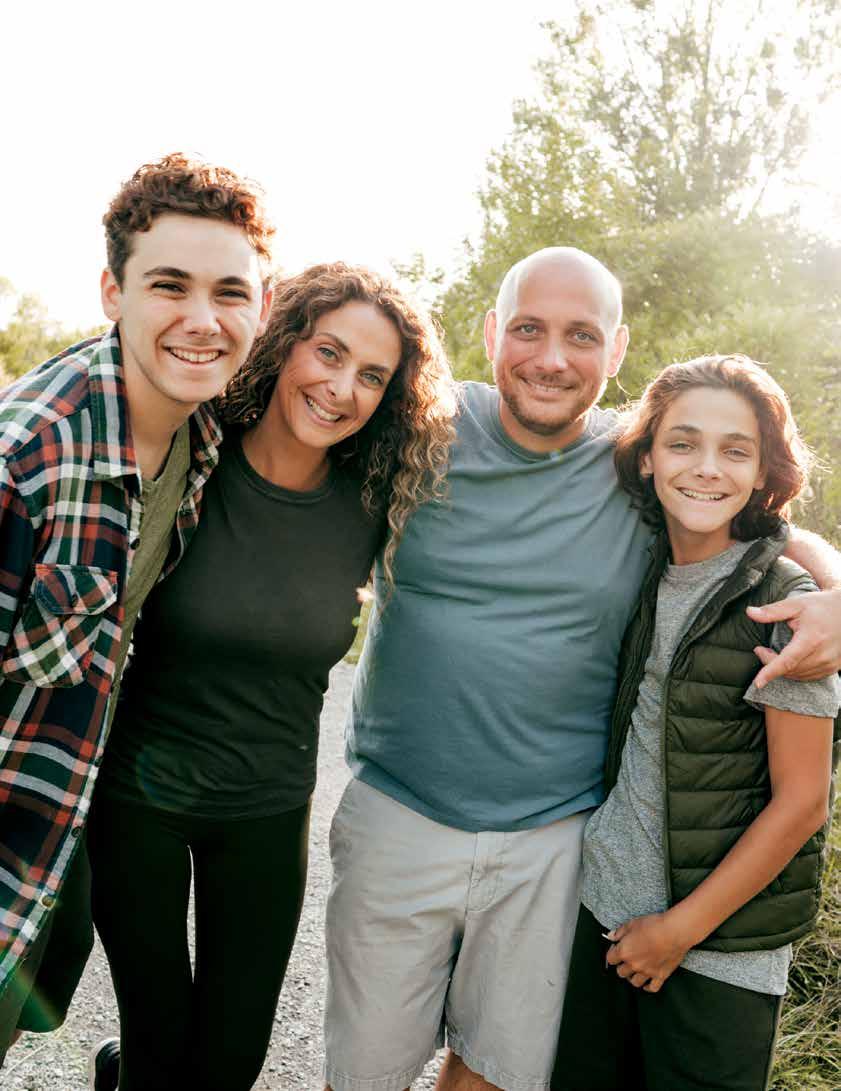
NUMBERS
How can I get my kids away from screens and more into being creative?
Screens are an integral part of our modern life, but that doesn’t mean they get to rule our lives or the lives of our kids. In fact, the American Academy of Pediatrics recommends no more than one hour of screen time a day for children under 12, and only two hours of screen time for teens and adults. It is important that our kids spend time away from the digital world exploring, discovering, and creating.
How do I get my kids to put their devices down? Meet as a family and discuss your goal of reducing screentime. Let everyone share their point of view and then work together to make a plan. Goals might include things like, “Put phones in the basket during dinner,” “Only one screen should be used at a time,” or “One hour of screen time a day.” If the family all meets the goals you set together, reward yourselves with a fun outing or a special treat.
How can I encourage creativity if all my kids want to do is spend time on screens? Supplement screentime with creative activities that have similar themes to their on-screen favorites. If your child is all about video games, help them explore an art class that focuses on fantasy themes. In place of social media, sign them up for an acting class or set them up with a pen pal or an art exchange program. If they are into anime, talk up the artwork then investigate the graphic novel equivalent or a book on drawing in their favorite style.
I want to get my kid off his device by signing him up for an art class, but says he hates art. What can I do? Pinpoint what he does not like about art. Does he have a preconceived notion about what art is or what it has to look like? Many times, changing the definition of “art” is all it takes.
NationalArtStandards.org advocates that art education also includes dance, music, theatre, and media arts. Furthermore, there is creativity and art in everything we do. That is why scientists and educators now refer to STEM as STEAM (Science, Technology, Engineering, Art, and Math). So don’t discount other classes. He’s creating art there, too.
The number of different types of fruit a “fruit salad” tree can grow.

The number of times faster that sound travels in water versus in air.

The height in inches of the tallest dog on his hind feet (Great Dane).

The number of flowers a bee has to visit to make one tablespoon of honey.
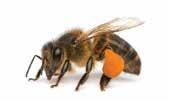
The age at which the brain is fully developed.

The number of chocolates in the largest box of chocolates ever made.

18 Issue #6 | YC MAGAZINE | thegcpc.org 6
4
87
4000
25
90,090
HAVE A QUESTION? akeller@thegcpc.org We cannot guarantee all questions will be published; however, we will do our best to respond to all questions submitted.
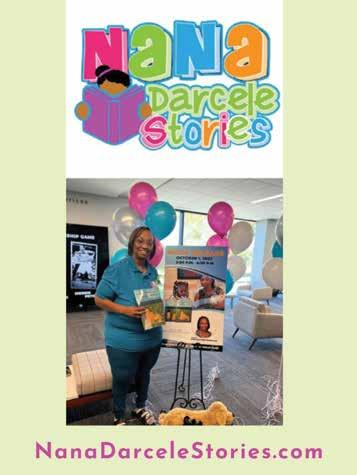

thegcpc.org | YC MAGAZINE | Issue #6 19 Prescription Drug Collection Boxes in Genesee County PROPERLY DISPOSE OF UNUSED AND EXPIRED PRESCRIPTION PILLS Burton City Police Department 4090 Manor Drive Mon Fri 9:00am 5:00pm Clio City Police Department 505 West Vienna Street Mon Fri 8:00am 4:00pm Fenton City Police Department 301 South Leroy Street Available 24 hours Flint Township Police Department 5200 Norko Drive Available 24 hours Turn in your unused, unwanted or expired medication (pills only) for safe disposal! NO LIQUIDS, PATCHES, NEEDLES, ETC. ACCEPTED For more information or to get help VISIT: www.theGCPC.org | CALL: 1-877-346-3648 Grand Blanc Township Police Department 5405 South Saginaw Street Available 24 hours Metro Police Authority 5420 Hill 23 Drive Mon Fri 9:00am 5:00pm Mott Community College Public Safety 1401 East Court Street In front of Public Safety Building Available 24 hours Flushing City Police Department 725 East Main Street Mon Fri 9:00am 4:30pm Genesee County Sheriff Substation Vienna Township Building 3400 West Vienna Road Mon Thur 8:00am 5:00pm Genesee Township Police Department 7244 North Genesee Road Mon Fri 9:00am 5:00pm

medicine cabinet:
FRIEND OR FOE?
By HOLLY MOOK, LAC, MSW Intern
What’s in your medicine cabinet? Over-the-counter (OTC) medications that are intended to be helpful can be harmful when misused. It’s important that you know the trends, the facts, and be aware of the dangers. Some OTC medications can be psychoactive, meaning mind-altering, which makes them an appealing way to get high. In fact, national studies show that the misuse of OTC medications is most common among youth ages 13–16. Youth are reporting that they are using OTC medications like Benadryl, Dimetapp, Robitussin, Imodium, and No Doz with the intention of getting “legally” high.
The National Institute on Drug Abuse (2021) states, the most commonly misused OTC medications are dextromethorphan and loperamide. Dextromethorphan (DXM) is a cough suppressant found in many OTC cold medicines. The most common sources of abused DXM are “extra-strength” cough syrup, tablets, and gel capsules. Youth misuse these drugs by taking medicine in exceedance dose other than directed on the package. They may also mix these medications with other things to create more desirable mixtures. An example would be “lean” or “purple drank” which is a mixture of cough syrup and soda pop, like 7 Up. The mixture disguises the taste which often leads to larger amounts of consumption. These drugs are also often misused in combination with other drugs, such as alcohol and marijuana.
Short-term effects of DXM misuse can range from mild stimulation to alcoholor marijuana-like intoxication. At high doses, a person may have hallucinations or feelings of physical distortion, extreme panic, paranoia, anxiety, and aggression. Other health effects from DXM misuse can include hyperexcitability, poor motor control, lack of energy, stomach pain, vision changes, slurred speech, increased blood pressure, and sweating. Misuse of DXM products containing acetaminophen can cause liver damage.
Loperamide is an anti-diarrheal that is available in tablet, capsule, or liquid form. When misusing loperamide, people swallow or drink large quantities of the drug. Loperamide misuse can cause euphoria, like other opioids, or lessen cravings
Some OTC medications can be psychoactive, meaning mind-altering, which makes them an appealing way to get high. In fact, national studies show that the misuse of OTC medications is most common among youth ages 13–16. Youth are reporting that they are using OTC medications like Benadryl, Dimetapp, Robitussin, Imodium, and No Doz with the intention of getting “legally” high.
and withdrawal symptoms. Loperamide misuse can also lead to fainting, stomach pain, constipation, eye changes, and loss of consciousness. It can cause the heart to beat erratically or rapidly, or cause kidney problems. When people overdose on DXM or loperamide, their breathing often slows or stops, similar to an opioid. This can decrease the amount of oxygen that reaches the brain, a condition called hypoxia. The National Institute on Drug Abuse (2021) continues to state, hypoxia can have short- and long-term mental effects and effects on the nervous system, including coma and permanent brain damage and death. Misuse of these medications can also lead to overdose. A person who has overdosed needs immediate medical attention. Call 911 if the person has stopped breathing or if breathing is weak, and begin CPR. DXM overdoses can also be treated with naloxone. Also important to note is the misuse of these drugs can lead to substance use disorders.
Another OTC drug trend is the misuse of caffeine pills. Caffeine pills contain a mixture of caffeine and inactive ingredients. Drugs.com lists some of the most popular brands of caffeine pills that are used as No Doz Maximum Strength, Stay Awake, Revive, and Cafcit. Youth are often using caffeine pills for many of the same reasons they consume energy drinks, to juggle their complicated schedules and battle sleep deprivation. They may also be misusing the drug to get high. Next Generation (2022) describes the misuse of caffeine pills has been noted to induce a slight high or euphoria. Like energy drinks, caffeine pills, when taken as directed, can offer a boost of energy with few negative side effects. The challenge again is how it may be misused. The average caffeine pill contains 200 milligrams of caffeine, meaning it only takes two pills to reach unhealthy levels. As described above with other OTC medications, it is much easier to consume a lot of caffeine at once when it comes in pill form. Misuse of caffeine pills can also lead to negative side effects. According to Drugs. com, some of these include extreme nausea, panic attacks, vomiting, dehydration and heart palpitations. Misuse with higher consumption can also lead to heart attack or death. A person who has overdosed should seek medical attention. Call 911 when necessary. Once again, important to note, misuse of this drug can lead to substance use disorders.
Now that you know the trends, the facts, and are aware of the dangers, let’s talk about what you can do to help. You can help by creating deterrents, making it harder to access these over-the-counter medications. A couple of ideas would be to lock them up or tuck them away where they are out of sight and not easily accessible. This will allow you to dispense and monitor what the youth will have access to and the dose. When a youth must request access, you can have a conversation about appropriate use and dosage. Providing time to model, teach, and have important meaningful conversations is invaluable. Remember, families are often the biggest protective factors and disapproving of misuse is a deterrent. Most importantly if you see or feel misuse is taking place, say something, do something! ■
thegcpc.org | YC MAGAZINE | Issue #6 21
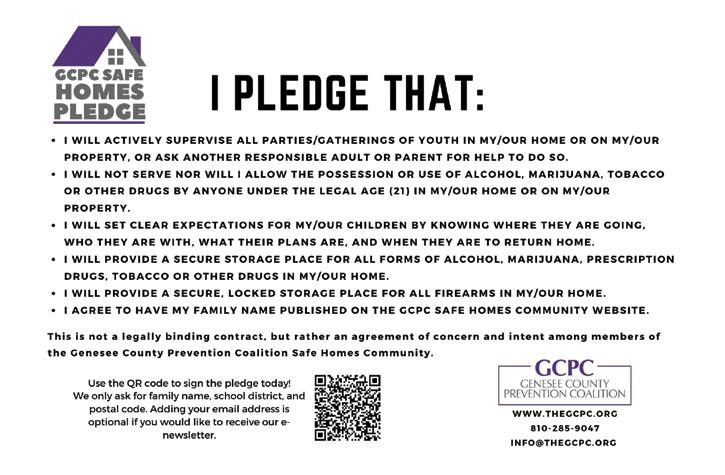



www.wowoutreach.org The Capitol Theatre is located between Harrison and Saginaw Street at 140 E 2nd St in Flint, MI www.flintsgottalent.com Supported by: Flint ReCAST
ALCOPOPS the dangers of
By STAFF
Alcopops describes alcoholic beverages that are similar to sweet drinks like soda pop, sweetened tea, or lemonade. The sweetness appeals to younger drinkers and may be a contributing factor in underage binge drinking. Binge drinking is defined as five or more drinks in a sitting by a male and four or more for a female. Basically, youth are drinking to get drunk.
The sweetness increases the allure by young people. Parents should be concerned about the very high alcohol content, which can range from 4-12% by volume. One supersize alcopop contains as much alcohol as a six pack of beer. Consuming three supersized alcopops within two hours is equivalent to drinking 17 standard drinks. Because the alcohol cannot be tasted, many inexperienced drinkers think they are harmless and not as dangerous as other forms of alcohol.
A study in Australia had 18- and 19-year-old volunteers blindly taste beverages to see if it tasted like alcohol. Almost a fourth of the participants did not think there was alcohol in the alcopops – and they had some experience drinking alcohol. It’s likely younger drinkers would find it even harder to tell.
The industry is targeting kids, even if they deny it. Studies show
that the majority of the flavored malt beverages are consumed by those under the age of 21. According to the American Academy of Pediatrics, minors see 65% more alcopop magazine advertisements than those over 21. The Marin Institute reports that in California 47% of the alcopops are consumed by underage drinkers.
Teenage girls are especially vulnerable to the dangers of consuming alcopops. An American Medical Association survey found of teen girls:
• Nearly one in six who have drunk alcopops in the past six months have been sexually active after drinking.
• One in four have driven or ridden in a car with a driver who had been drinking.
• Those who binge drink are at three times the risk of contemplating suicide than girls who never drink.
Research shows that parents are the number one reason youth decide not to drink. It’s important to educate kids on the dangers of these beverages and potential consequences if they do. ■

thegcpc.org | YC MAGAZINE | Issue #6 23
SAMHSA’s “Talk. They Hear You.”® Campaign Launches New Mobile App for Parents
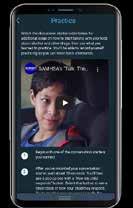

The Substance Abuse and Mental Health Services Administration’s (SAMHSA) new “Talk. They Hear You.”® campaign mobile app helps parents and caregivers prepare for some of the most important conversations they may ever have with their kids. The app shows parents how to turn everyday situations into opportunities to talk with their kids about alcohol and other drugs. It also equips them with the necessary skills, confidence, and knowledge to start and continue these conversations as their kids get older.
Features of the new app include:
• Sample conversation starters
• Ways to keep the conversation going
• An interactive practice simulation section
• The opportunity to earn badges for practicing and having real-life conversations
• A resources section with informative and useful videos, fact sheets, brochures, infographics, guides/toolkits, and more
Download the App Today!
Parents and caregivers can download the app today to see how easy it can be to talk with their kids about underage drinking and other drug use. The app is available for free on the App Store, Google Play, and the Microsoft Store.
Scan the QR code or visit https://www.samhsa.gov/talk-they-hearyou/mobile-application to:

• Watch the app’s promo video.
• Learn more about the app and see how it works.
• Find out how to download the app.

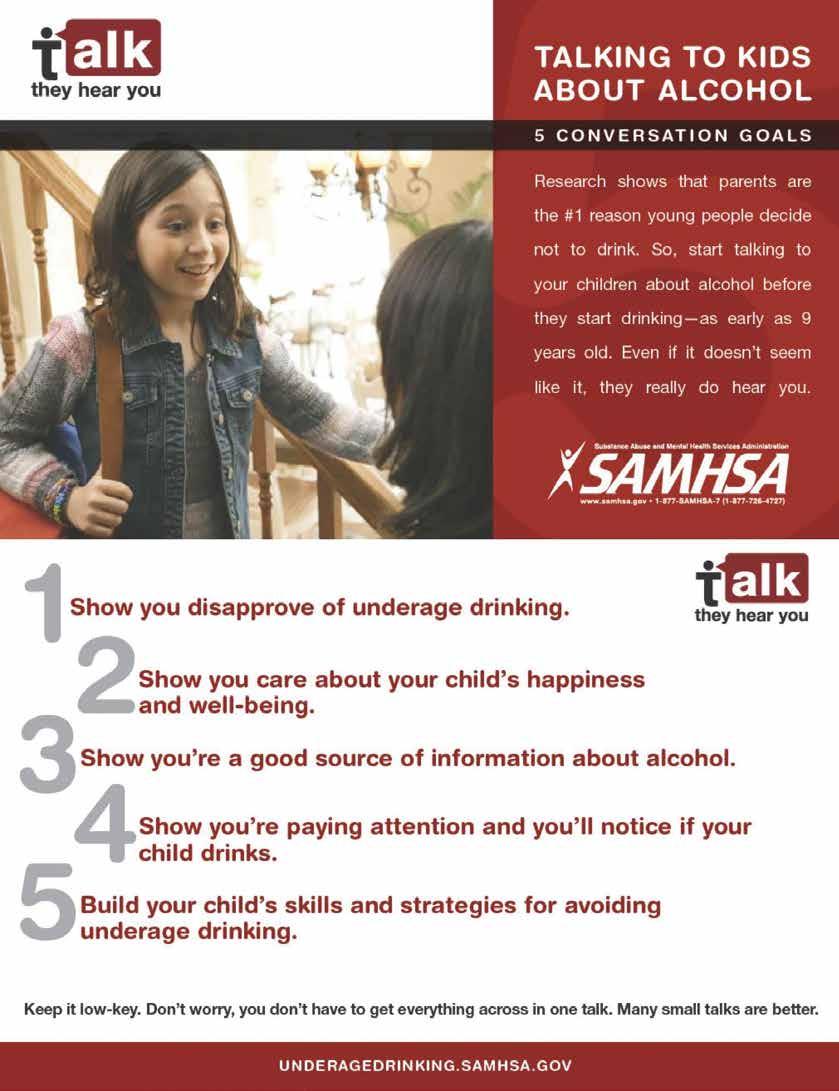

Genesee County Prevention Coalition G4428 Fenton Rd. Flint, MI 48507































































